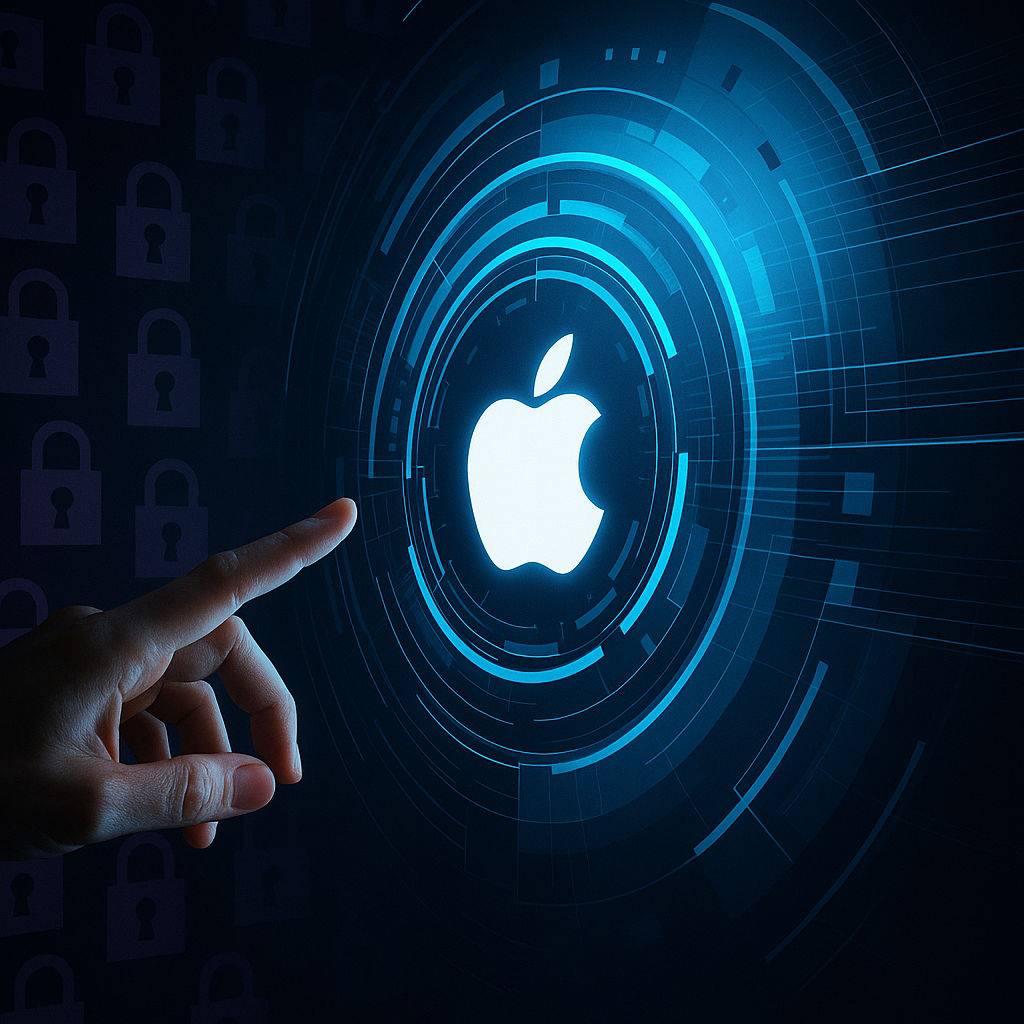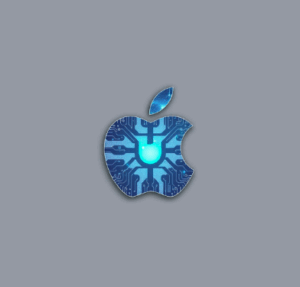
Artificial Intelligence (AI) has become a transformative force across the technology landscape. Over the past several years, AI-powered innovations have drastically changed how users interact with their devices and services. Giants like Google, Microsoft, and OpenAI have propelled AI to the forefront by launching powerful language models and intelligent assistants. Meanwhile, Apple—despite its vast resources and influence—has been perceived as falling behind in this domain. Despite having a reputation for innovation, Apple has struggled to match the breakthroughs made by its competitors. The question arises: why has Apple, a company renowned for its technological prowess, still not cracked AI? This article provides a detailed examination of the factors that have contributed to Apple’s slower AI progress, highlighting internal challenges, strategic decisions, and the broader market landscape. Additionally, recent developments and future prospects will be reviewed to offer a comprehensive understanding of Apple’s current AI position.
A Brief History of Apple’s AI Endeavors
Apple’s relationship with AI is longstanding but cautious. Its journey began in earnest when Siri, the voice assistant, was introduced in 2011 after Apple acquired the company Siri Inc. Siri was one of the first digital assistants to capture public attention, heralding the promise of AI-powered voice interactions. Yet, since its launch, Siri has not advanced at the same pace as competing assistants such as Google Assistant or Amazon Alexa. Apple’s approach has traditionally prioritized user privacy, emphasizing on-device processing and minimal data collection. While this aligns with Apple’s brand identity, it has also restricted the volume of user data available to train AI models. This trade-off between privacy and AI efficacy has often limited the scope and accuracy of Apple’s AI-powered features. Over the past decade, Apple has embedded AI into its devices through features like facial recognition (Face ID), computational photography, and predictive typing. However, these enhancements mostly rely on specialized machine learning models rather than the broad, large language models (LLMs) that have revolutionized AI applications elsewhere.
The Struggles of Siri: The AI Assistant That Didn’t Evolve
Siri’s initial release sparked excitement, but over time, its limitations became apparent. Its architecture was primarily rule-based and reliant on scripted responses, rather than being powered by deep learning models that could understand context and nuance. This resulted in Siri struggling with multi-step conversations or ambiguous queries, limiting its usefulness. While competitors invested heavily in advanced AI research, developing conversational models capable of generating human-like text and adapting in real-time, Siri remained relatively static. This stagnation can be attributed to multiple factors:
-
Technological Limitations: Siri’s underlying system was not designed to handle the complexity of modern AI interactions. Unlike ChatGPT or Google’s Bard, which use LLMs trained on vast datasets, Siri relied on smaller, rule-based algorithms.
-
Privacy Constraints: Apple’s strong emphasis on data privacy has restricted the amount of user data available for training AI systems. While this protects users, it has hindered the refinement and personalization of AI models.
-
Lack of Contextual Awareness: Siri has been criticized for its inability to maintain context across multiple conversational turns, reducing the naturalness and efficiency of interactions.
-
Hardware and Integration Issues: Though Apple’s hardware is powerful, AI computations often require extensive processing power and optimized models, which Apple only recently began addressing with its own silicon chips.
As a result, many users and critics have viewed Siri as falling short compared to Google Assistant and other AI assistants that have leveraged advances in natural language processing and machine learning.
Internal Challenges and Leadership Turnover
Apple’s AI division has been plagued by internal challenges that have slowed progress. The company’s decision to recruit John Giannandrea, former head of Google’s AI efforts, in 2018 was widely seen as a move to boost Apple’s AI capabilities. Giannandrea was expected to accelerate the development of AI technologies and integrate them across Apple’s ecosystem. However, despite his leadership, internal reports have suggested that Apple’s AI team faced delays, disagreements, and strategic indecision. Staff turnover and dissatisfaction reportedly emerged as significant issues, with some engineers expressing frustration over a lack of clarity in AI priorities. The company’s cautious and methodical culture, while effective for hardware innovation, appears to have contributed to a slower pace in software AI innovation. The balancing act between pioneering new AI tools and maintaining Apple’s strict privacy and quality standards has proven challenging. This internal struggle has led to delays in upgrading Siri or deploying generative AI tools comparable to those of competitors. The need to reengineer Siri from its core with a new, large language model has been acknowledged but is still in progress.
The Competitive Landscape: Google, Microsoft, and OpenAI
When Apple’s AI efforts are compared with those of other industry leaders, the contrast is stark. Companies such as Google and Microsoft have been aggressive in their AI investments and product launches.
-
Google has developed Gemini, an advanced AI model integrated throughout its Workspace productivity tools and its AI assistant Bard, which is designed to deliver sophisticated conversational experiences.
-
Microsoft, through its partnership with OpenAI, has integrated AI capabilities like Copilot into its Office 365 suite, offering users AI-assisted writing, analysis, and automation tools directly in familiar applications.
-
OpenAI leads with ChatGPT, a large language model that has garnered over 100 million users globally. Its API ecosystem powers a range of applications from chatbots to content generation tools.
These competitors have capitalized on generative AI and multimodal models, rapidly advancing user expectations of what AI can do. Apple’s reluctance to fully embrace or openly collaborate with these entities has arguably contributed to its slower pace.
Apple’s Current AI Roadmap and Strategic Moves
Recent information indicates that Apple has been working on overhauling its AI strategy. Among the key developments are:
-
Redesigning Siri: A new version of Siri powered by Apple’s internally developed large language model, codenamed Ajax, is anticipated. This overhaul aims to make Siri more conversational, context-aware, and capable of understanding complex queries.
-
On-device AI Processing: Apple is investing heavily in enabling generative AI to operate locally on devices using its powerful M-series chips. This approach seeks to preserve user privacy while improving AI responsiveness.
-
Developer Tools and APIs: Apple plans to provide more AI-powered tools and frameworks for app developers, encouraging the creation of intelligent applications within its ecosystem.
Apple has also increased AI-related hiring, signaling renewed focus. However, the timeline for these advancements remains uncertain, and many features are still under internal testing.
The Vision Pro and AI Integration Potential
The launch of Apple’s Vision Pro mixed reality headset presents an intriguing opportunity for AI integration. Vision Pro’s advanced spatial computing capabilities could be enhanced by AI features such as:
-
Object recognition to better interact with the physical environment.
-
Gesture recognition and natural language understanding for hands-free control.
-
Multimodal input combining speech, gaze, and hand movements.
Despite these possibilities, the Vision Pro currently lacks the full suite of AI-powered functionalities seen in competitors’ AR devices. The potential for AI to elevate user experiences in this emerging category is significant but still largely untapped.
Privacy and Regulatory Pressures Impacting AI Progress
Apple’s emphasis on user privacy has been a defining characteristic but also a limiting factor in its AI development. The company’s insistence on on-device data processing reduces the scale of data available to train AI models compared to cloud-based approaches used by rivals. Furthermore, Apple operates under increasing scrutiny from regulators, especially in Europe and the United States, where AI deployment is closely monitored for ethical and security concerns. This environment requires Apple to navigate compliance carefully, potentially slowing innovation cycles. Additionally, the U.S. government has raised concerns about Apple’s partnerships, notably with Alibaba in China, regarding AI capabilities and geopolitical implications. This regulatory landscape creates further complexities for Apple’s AI ambitions.
Key Highlights from WWDC 2025
At its 2025 Worldwide Developers Conference (WWDC), Apple previewed several AI-powered features, including:
-
AI-generated content summaries in Safari to improve browsing efficiency.
-
Smart reply suggestions in Mail and Messages to enhance communication.
-
Improved dictation services leveraging AI for better accuracy.
-
AI-assisted coding tools within Xcode to support developers.
Although these updates demonstrate Apple’s AI progress, they fall short of delivering a transformative AI assistant comparable to ChatGPT or Microsoft’s Copilot. This measured approach aligns with Apple’s overall cautious AI strategy.
Expert Opinions on Apple’s AI Progress
Industry analysts and technology experts have offered varied perspectives on Apple’s AI journey:
-
Ben Thompson of Stratechery suggested that Apple’s desire to do AI “on its own terms” may risk losing relevance as the AI ecosystem evolves rapidly.
-
Bloomberg’s Mark Gurman believes major AI announcements are forthcoming but warns Apple trails competitors by several years.
-
Venture capitalist M.G. Siegler criticized Apple’s reluctance to collaborate with established AI leaders like OpenAI, which may delay innovation.
These views collectively highlight the tension between Apple’s measured innovation style and the fast-paced demands of AI development.
Can Apple Still Catch Up in AI?
Despite the delays and challenges, Apple possesses significant advantages that could enable a resurgence in AI innovation:
-
Its massive, global user base provides a large, engaged audience.
-
The custom Apple Silicon architecture, particularly the M-series chips, is designed to handle advanced AI workloads efficiently.
-
Vertical integration allows Apple to optimize hardware and software for AI applications in ways competitors cannot.
If Apple successfully launches a robust, LLM-powered Siri alongside expanded AI developer tools and on-device generative features, it could reassert itself as a major player in the AI arena. However, the window for catching up is narrowing. As AI becomes an embedded component of daily productivity and creativity, Apple’s relevance depends on delivering timely, competitive AI solutions.
Apple’s AI journey reflects a complex interplay of ambition, caution, and evolving strategy. While the company has been slow to adopt large-scale generative AI compared to competitors, it remains well-positioned to make impactful moves. A redesigned Siri, enhanced on-device AI features, and a new generation of AI-powered tools are in development. Nevertheless, the tech world is moving swiftly, and user expectations are rising. For Apple to maintain its innovation leadership, it must accelerate its AI rollout without compromising the core values of privacy, quality, and user trust. As 2025 progresses, the world will be watching to see whether Apple’s long-anticipated AI transformation finally materializes—or if the company continues playing catch-up in a race it helped start but has yet to lead.
Feel free to check out our other website at : https://synergypublish.com



